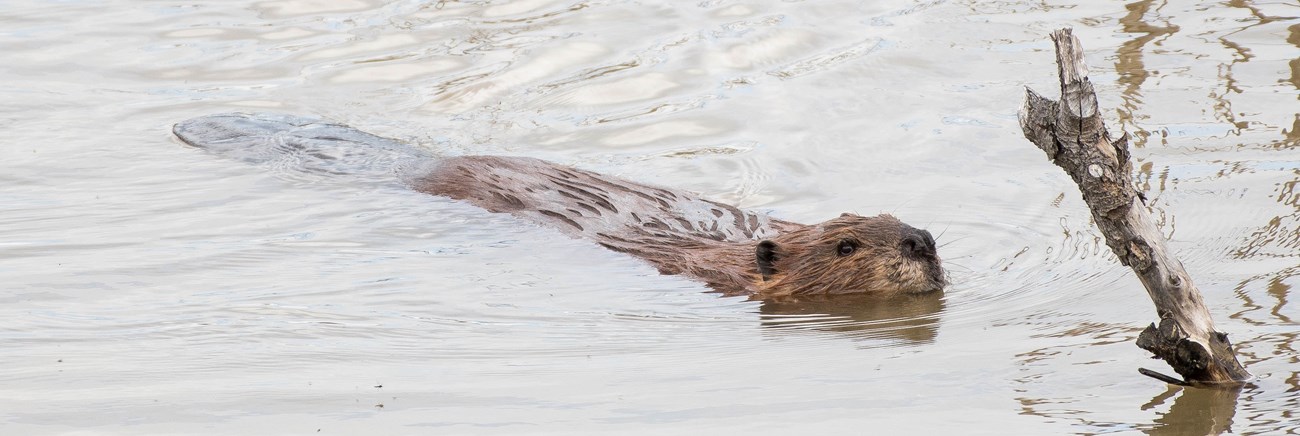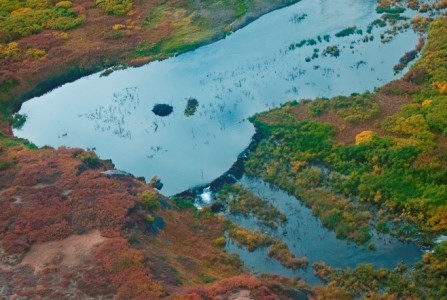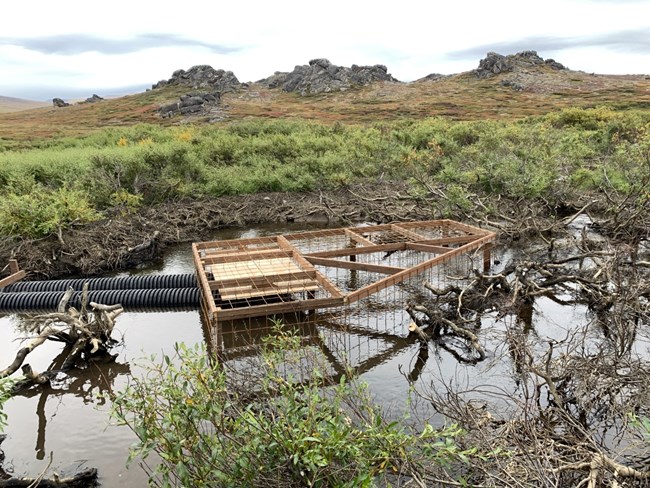
NPS Photo / Savannah Glasscock With large webbed feet and a broad scaly tail, these semi-aquatic mammals range in size from 2-3 feet long with about a 1-foot-long tail and can weigh up to 60 lbs. They have strong, continually growing front teeth, known as incisors, which they use to gnaw down trees and shrubs. A second set of transparent eyelids allows them to navigate underwater for up to 15 minutes at a time. 
Beavers also use ponds and wetlands to stash their food during winter months. Although beavers don’t hibernate through the winter, they become much less active and spend most of the winter months in their cozy lodges. As herbivores, their diets consist entirely of vegetation, including bark, twigs, and roots. In Arctic Alaska, beavers are known to eat willow (Salix spp.), alder (Alnus spp.), and cottonwood (Populus spp.). 
NPS Photo / Andrea Willingham Beavers in Bering Land BridgeBeavers have occupied Serpentine Hot Springs for over 20 years. As shrub growth becomes more common throughout the tundra, beavers continue to move in. More dams and beaver lodges mean more ponds and wetlands, which has a huge impact on the other species across the landscape.At Serpentine Hot Springs, the hot water from the springs keeps the area unfrozen even in cold winter months. Scientists theorize that open water throughout the winter creates an ideal environment for beavers. But before beavers entered the landscape, the warmer temperatures at Serpentine Hot Springs also meant that larger trees were able to grow, creating a buffet of cottonwood trees for families of busy beavers. After they moved in, the cottonwood trees at Serpentine quickly and completely disappeared, and beaver dams and lodges took their place. These dams altered the flow of water in the area and ultimately flooded the Serpentine Airstrip. Move the slider to see how beaver activity led to the disappearance of cottonwood trees at Serpentine Hot Springs. 
Left image
Right image

NPS Photo Beaver ManagementIn 2022, staff from Bering Land Bridge National Preserve and a biologist who specializes in beaver management installed a beaver flow device to mitigate flooding of the Serpentine Airstrip from a nearby beaver dam.The flow device, consisting of pipes and a filter system, was strategically installed near the beaver dam that was threatening the airstrip. The pipe is fitted in an opened section of the dam, routing water through to prevent overflow. The filter system spreads the flow of water over a broader area, reducing the audio and visual cues that typically trigger beavers to rebuild dams. While the size and location of the device discourages beavers rebuilding a dam at this site, it does not affect small fish who are able to freely swim through it. The wetland habitat at Serpentine Hot Springs and the beaver flow device are monitored in order to strike a balance between infrastructure and the natural environment. Learn more about beavers in Arctic AlaskaThe Arctic Inventory and Monitoring Network (ARCN) monitors streams and rivers in all Arctic parklands to answer important questions. |
Last updated: December 14, 2023
